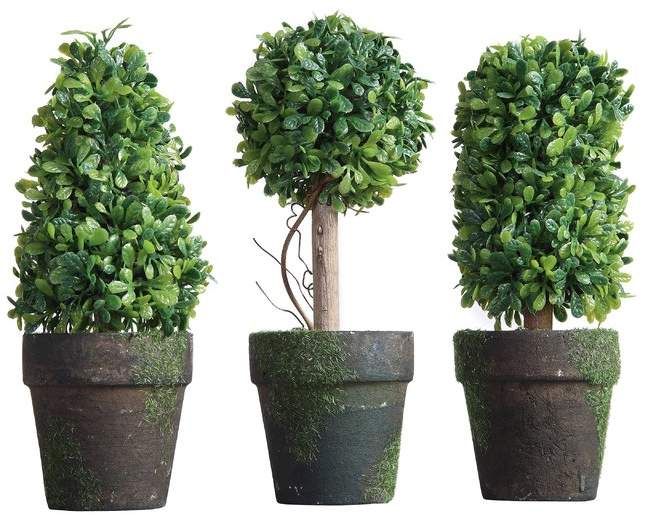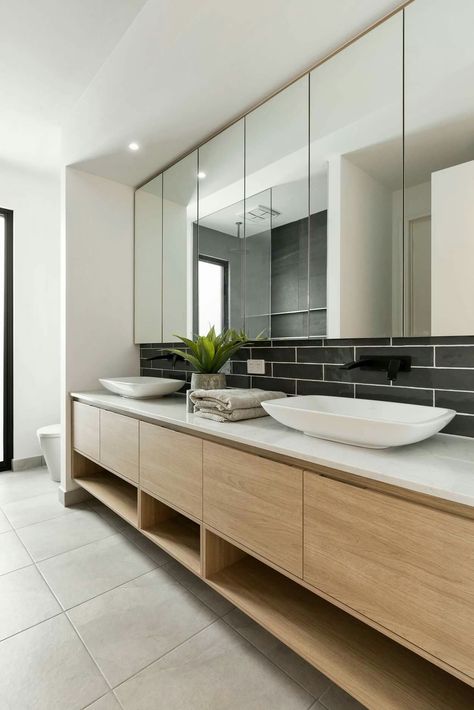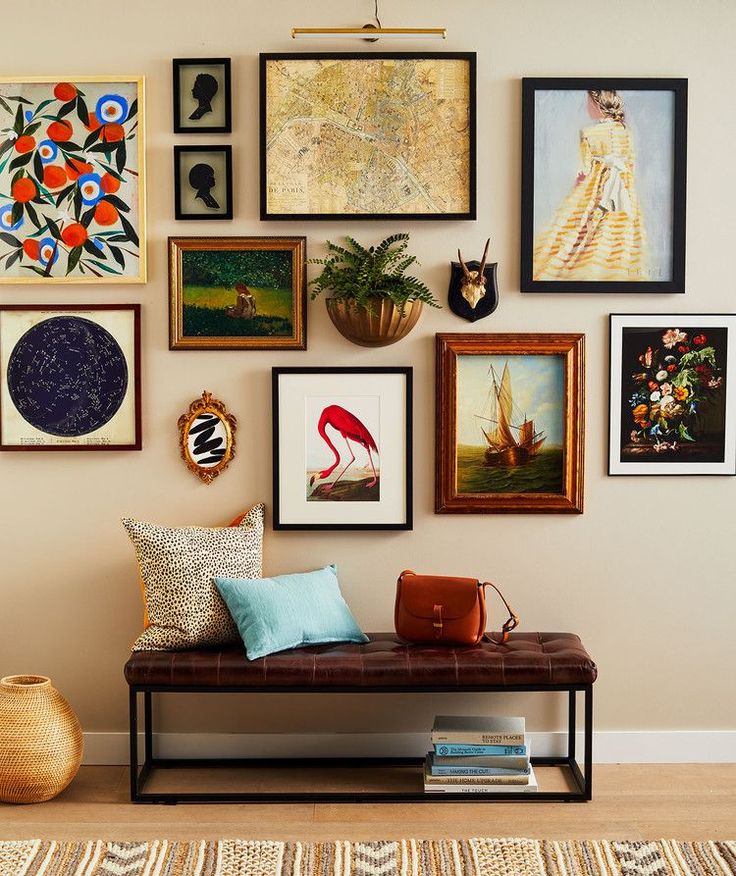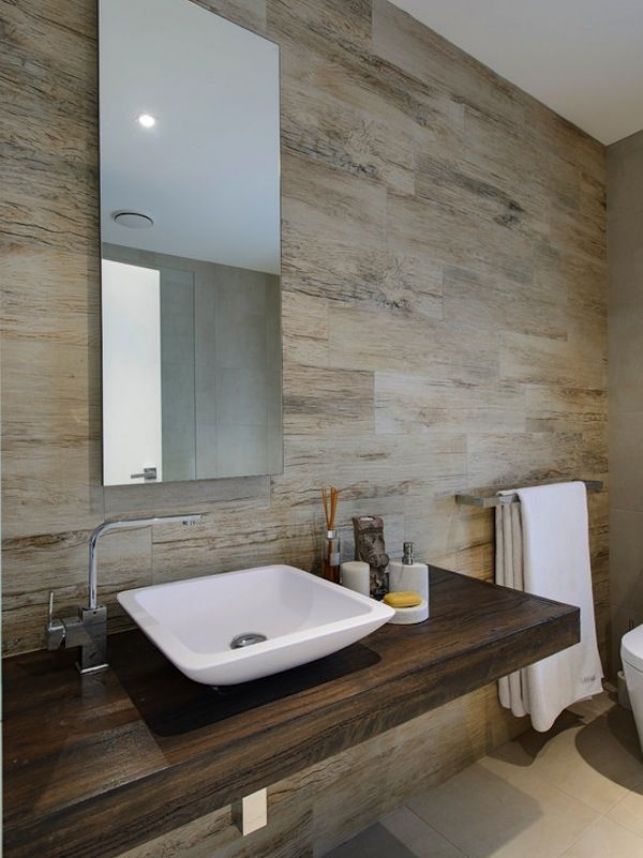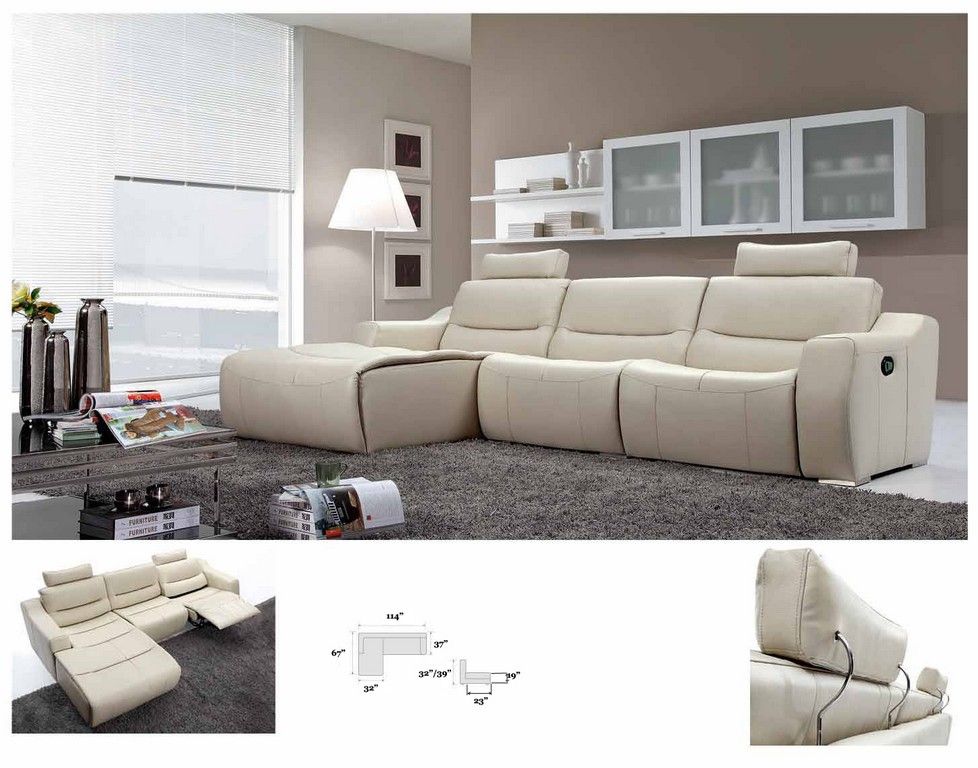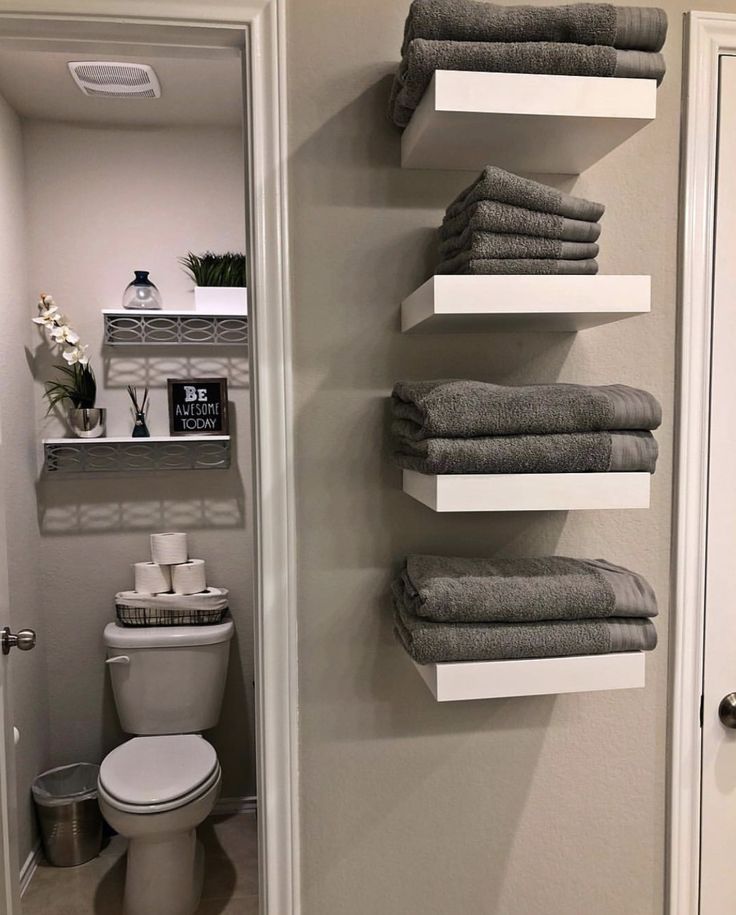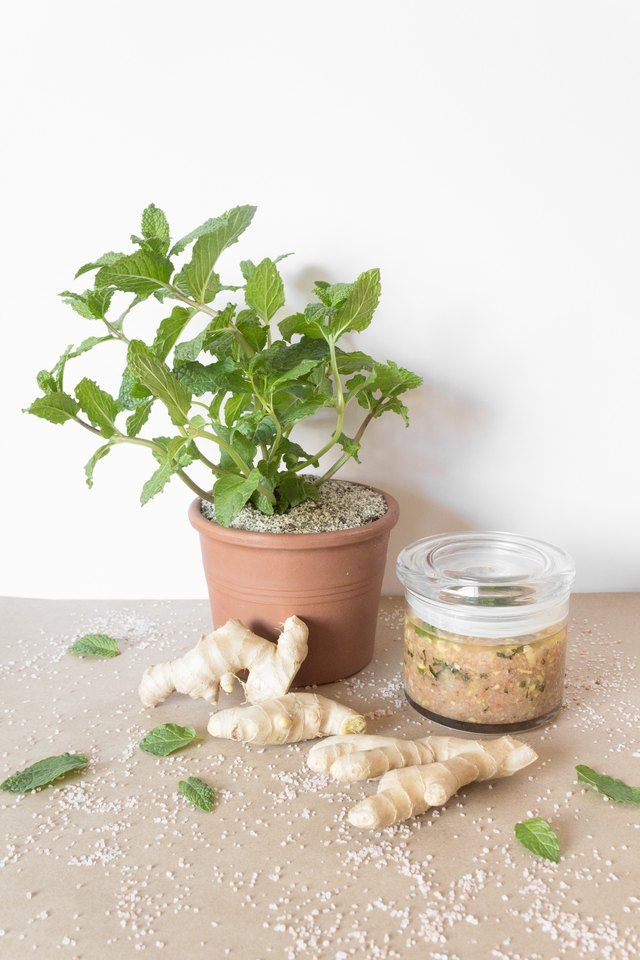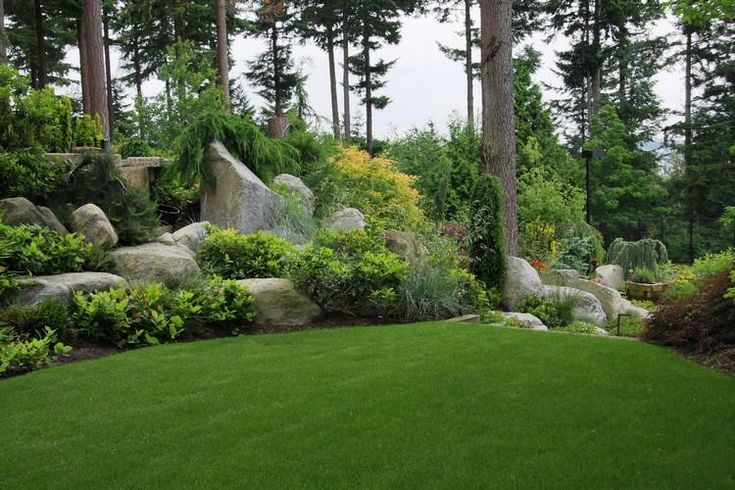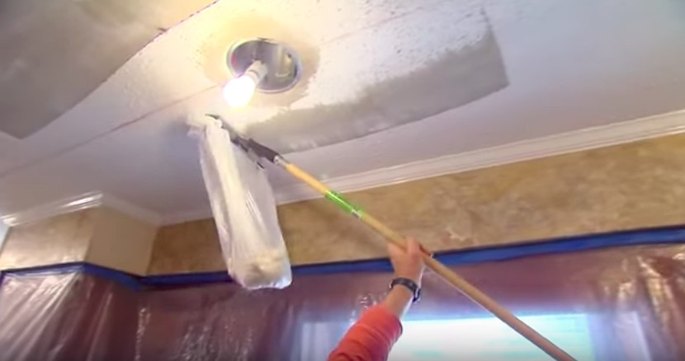Best potted trees for privacy
Definitive Guide To Growing Trees In Pots
Growing plants in containers is an easy way to add color, texture and size to your outdoor garden. Trees offer a sense of calm, beauty and wilderness to every landscape. They can be used as part of the background or focal point of any garden design, either large or small.
Jay Scotts Montroy Planters // Reveal DesignContainers come in different varieties: concrete, plastic, resin or clay pots are all excellent choices. Each type brings to the table different benefits. Choosing the right container is going to be just as important as choosing the right
Choosing which trees to grow in containers is not as simple as it sounds. There are many factors to consider before deciding on the tree that’s right for you.
Contents
What are some benefits of planting trees in containers?
There are many different reasons why you may want to do container planting instead of ground planting.
First, with container planting, you can take your trees inside during the winter to shelter them from frost, or during the summer to protect them from really hot weather. You can even take them with you when you move to a new house!
Second, it’s also handy to have a container-grown tree for decorating patios and decks, creating more usable outdoor spaces, and adding color, order, and texture to your garden.
Small tree in pot @ Sigmund on UnsplashCan you grow large trees in containers?
Yes, not just small trees, you can grow larger trees in containers too. A potted tree must be watered and fertilized more frequently than those planted directly in the ground, but they will thrive for many years if given proper care.
You can check out how large planters and greenery have helped to create a more visually appealing pool area in one of our projects
Large tree planters on driveway @ Taylor Made PlantersWhat types of trees grow well in containers?
There are hundreds of species that grow well in containers. Here is a list of
1. Dwarf Alberta Spruce (Picea glauca ‘Conica’)
A dwarf evergreen tree is known for its dense flurry foliage and conical growing shape.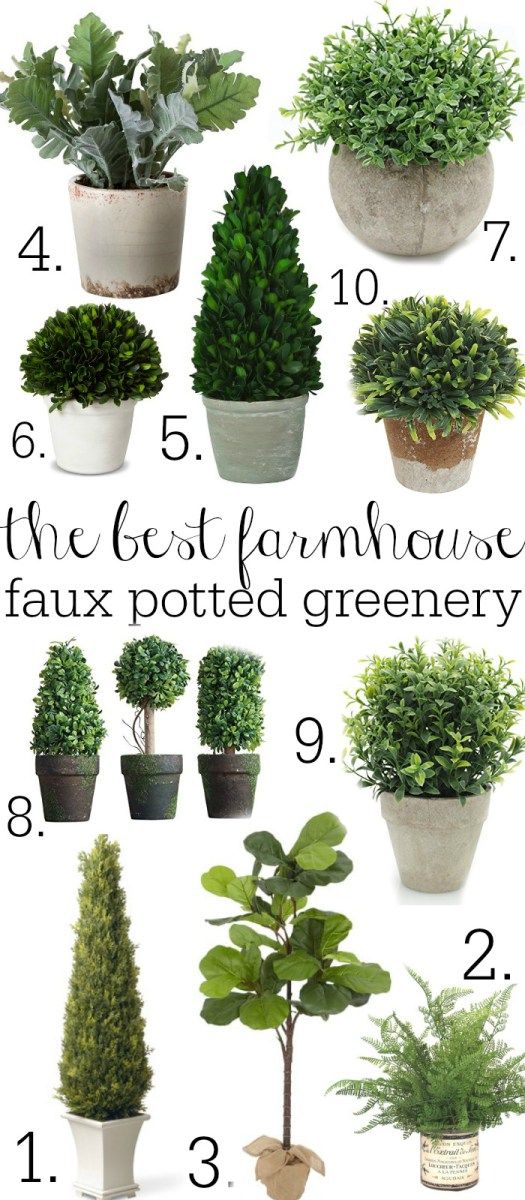 It grows to a height of 4-13 feet tall with a width of 3 feet. It is slow-growing and is commonly used as a Christmas tree in winter. This dwarf tree grows fine in a pot and prefers cold winters and mild summers.
It grows to a height of 4-13 feet tall with a width of 3 feet. It is slow-growing and is commonly used as a Christmas tree in winter. This dwarf tree grows fine in a pot and prefers cold winters and mild summers.
2. Loblolly Pine (Pinus taeda)
This is known for being one of the fastest growers among pine trees, which makes it perfect if your goal is to create a hedge or shade. It has bluish-green needles and grows at an average rate of 1 foot per year. The height of the loblolly pine is 25-30 feet and its width is 10-15 feet.
Pinus taeda @ LindasPhotography / Getty Images3. Eastern Redbud (Cercis canadensis ‘Forest Pansy’)
This beautiful tree has purple foliage in spring and shows off brilliant pink blooms in early summer, followed by heart-shaped seed pods in fall. Native to North America, the Eastern redbud is frost resistant and grows well in zones around 6b.
Eastern redbud @4. Dwarf Mugo Pine (Pinus mugo ‘Mughus’)
This is a slow-growing evergreen conifer with short green needles and covered with white dots, which give it an interesting appearance.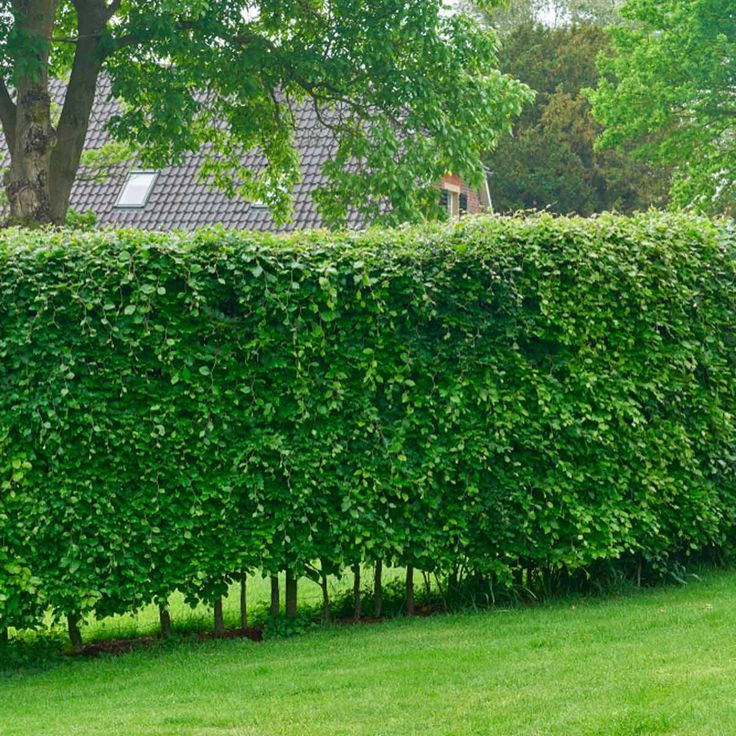 It grows to a height of 5 feet and a width of 10 feet. This dwarf variety is slow-growing and takes about 10 years to reach a mature size.
It grows to a height of 5 feet and a width of 10 feet. This dwarf variety is slow-growing and takes about 10 years to reach a mature size.
5. Blue Spruce (Picea pungens ‘Glauca’)
This evergreen conifer is well-known for its short dark green needles and silvery-blue color that makes it a gorgeous addition to any landscape. It grows up to 30 feet high with a width of 15 feet and is perfect for USDA zones 1 to 7.
Picea pungens ‘Glauca’ @ Internet6. Indian Hawthorn (Rhaphiolepis indica)
Native to China, this evergreen shrub has green foliage throughout the year and pink flowers in late spring. It is tolerant of full sun, partial shade and can survive drought conditions. It grows 5-7 feet high with an equal spread and is absolutely stunning when used for decor and landscaping. The Indian Hawthorn prefers USDA regions of 8 to 11.
Rhaphiolepis indica @ TY Nursery7. Dwarf Japanese Maple (Acer palmatum)
Depending on the cultivar, a dwarf Japanese maple can mature at about 6-8 feet. In general, the dwarf variety is one of the most spectacular trees with leaves of jaw-dropping red and profuse branching. They are great for adding the wow factor to your container garden.
In general, the dwarf variety is one of the most spectacular trees with leaves of jaw-dropping red and profuse branching. They are great for adding the wow factor to your container garden.
8. Orange tree (Citrus sinensis)
For something more exotic, try an orange tree. There are many fruit trees you can grow outside, but nothing is juicier than an orange tree. As long as basic care requirements are met, such as water and light, they are relatively easy to care for. Though they aren’t frost resistant, you can always bring them inside during the winter.
Citrus sinensis in containers @ InternetWhat small trees grow well in pots?
There are many trees that are small enough to grow in small gardens or even indoors. Most dwarf varieties of common outdoor trees are well suited to grow indoors. Some other popular favorites include:
- Fiddle Leaf Fig (Ficus lyrata)
- Yucca (Yucca elephantipes)
- Rubber Plant (Ficus elastica)
- Calamondin Orange Tree (Citrus mitis)
- Jade Plant (Crassula argentea)
- Parlor Palm (Chamaedorea elegans)
- Dumb Cane (Dieffenbachia)
- Weeping Fig (Ficus benjamin)
Palm trees are a fan favorite, and a personal favorite too.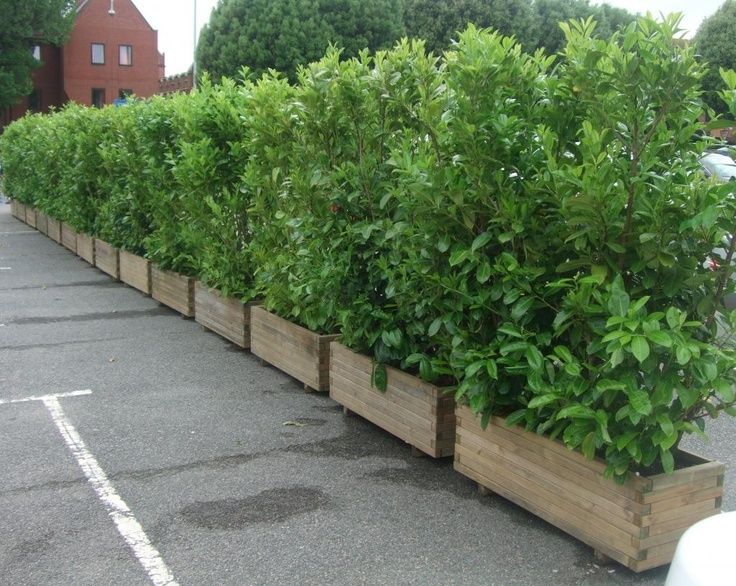 Check out why in our full guide on Indoor and outdoor palm tree landscaping.
Check out why in our full guide on Indoor and outdoor palm tree landscaping.
What are the best-potted trees for privacy?
The best containerized trees for privacy are those that grow tall and have dense bushy foliage. They block the view of your home from neighbors and passersby, giving you a serene outdoor oasis to relax in. The most common are:
- Leyland Cypress Tree.
- Emerald Green Arborvitae.
- Flowering Dogwood Tree.
- Thuja Green Giant.
How tall can trees grow in containers?
There are many different types of container-grown trees, and just because you grow trees in pots doesn’t mean your tree won’t get very tall. In fact, a well-cared-for tree can grow naturally to reach its full height potential.
Though growing trees in a container can limit its growth. As the roots grow they will run out of space and become root-bound or ‘pot bound’. This will stunt the tree’s growth to a certain extent.
This will stunt the tree’s growth to a certain extent.
Another technique is root pruning. This is usually done to limit the mature size of your tree and produce smaller trees. For root pruning, gently pull the plant out of the soil and use a sharp knife to trim the roots and replace in the existing pot.
If you are after a tall tree, large pots are said to encourage up to 40% more growth! So, it’s important to choose a container that is able to accommodate both the growing tree and its tree roots.
Root pruning @ v_zaitsev / Getty ImagesMaintenance tips for growing trees in planters
What are some rules I need to follow when watering my potted trees?
The amount of water that your container-grown trees need will depend on many different factors, such as whether or not it’s in direct sunlight, wind conditions and temperature. As a general rule, though, you should water your plants thoroughly when the soil is completely dry.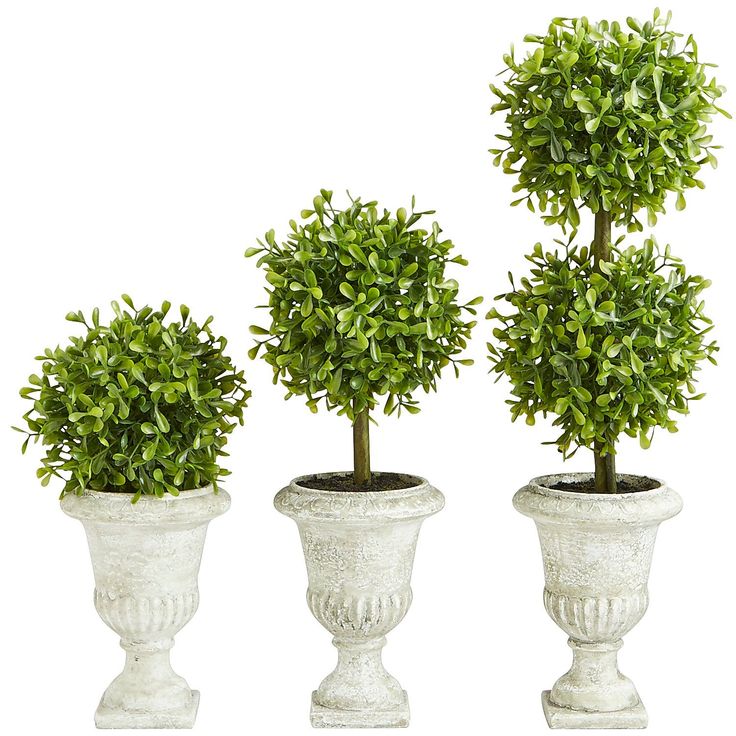
How should I fertilize my potted plants?
Fertilizer is important for the growth of plants as tree roots absorb the missing nutrients from the existing soil. The easiest way to go about fertilizing containerized plants is by preparing a nutrient solution and pouring it over the soil mix.
Once you’ve selected a fertilizer (make sure you use an organic one!), you’ll need to apply it about once every two weeks for container-grown plants.
Warning: Young trees are quite vulnerable when it comes to fertilizing and chemicals, so make sure you do it at their peak growing cycle – usually in spring.
Fertilizing potted rhododendron with granulated fertilizer @ ronstik / Getty ImagesWhat is the best type of fertilizer for container-grown trees?
Container-grown trees should be supplied with an annually added slowly released fertiliser.
It’s important to choose a fertilizer that’s high in phosphorus, which stimulates root development. There are many different types of container-grown tree fertilizers available at your local garden center, but there are also organic alternatives available that are much safer for your plants, yourself, and your family.
There are many different types of container-grown tree fertilizers available at your local garden center, but there are also organic alternatives available that are much safer for your plants, yourself, and your family.
How do you prepare fiberglass and plastic containers for planting trees?
1. The first thing you need to do is clean out the plastic pots and remove any stickers or labels. If there are any cracks, it’s time for a new planter since those will only get bigger as your tree grows.
2. Fill the bottom of the container with enough potting soil that it is three inches below where your tree will sit.
3. Remove your tree out of its current container, gently shaking off the loose soil. Make a hole in the center of the potting mix that’s about 2 inches deep. Place your tree into this hole and fill in around it with more dirt until the roots are completely covered.
4. Water deeply to help settle all of the soil. You don’t want loose dirt because the roots may grow up and out of the soil, then you’ll have to re-pot it.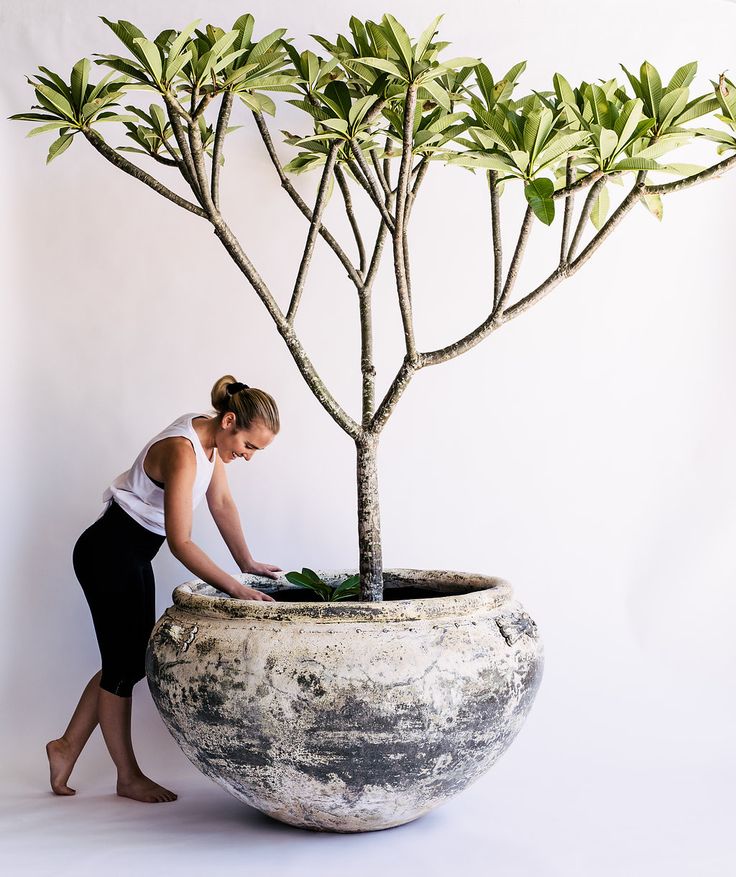
5. Add a thin layer of mulch around the top of the planter to help retain water and prevent weeds from growing in your container garden.
Use the right soil for your container tree
The care for a container-grew tree is different from a tree planted in the land. They are more susceptible to drying out and need regular and thorough watering.
Regular soils may not drain well in containers and are prone to weeds, insects and diseases. Instead use a soil mix of compost, sand, and perlite. Refresh soil each spring by removing loose, dry top soil and replacing it with fresh compost-enriched soil.
Gardening scoop and soil @ Free-Photos / pixabayWhere do I put trees in pots if they are going to be outside?
The best place to plant container-grown trees is in a sunny location that gets around 6 hours of sun a day. Also consider if you want your tree as privacy barrier or for shade, or simply just for decoration.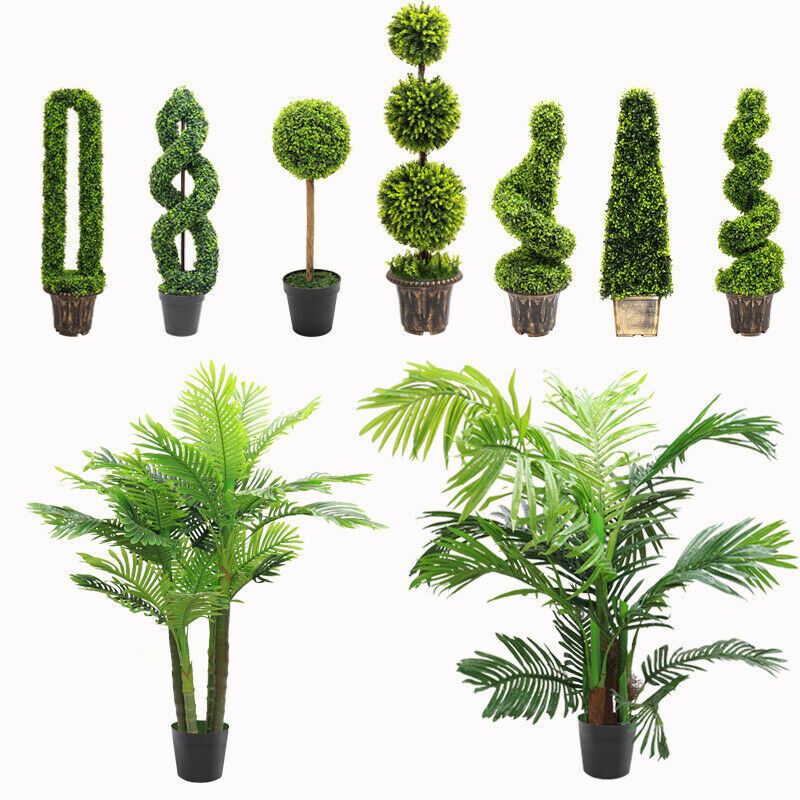
How big should my planter be for a tree?
For trees, you’ll need a planter box that’s at least twice the width and depth of the root ball.
As the trees grow taller, so does their tree root ball. In order to accommodate some growth, calculate that you’ll need to move them to a larger container every 2-3 years in a pot that’s 4 inches larger.
If you are planting multiple trees in the same container, then they should have at least 4 feet of space between them.
Jay Scotts fiberglass containers in different sizes @ Jay ScottsHow long can a tree live in a container?
Trees can live in a container for as long as they are healthy and happy. If you follow the proper steps to ensure your tree’s health, it could stay in the same pot for 20 years or more.
Container-grown trees aren’t meant to be grown forever, though some types of trees may outlive their planters. This is why it’s a good idea to have a plan to re-pot your tree every few years.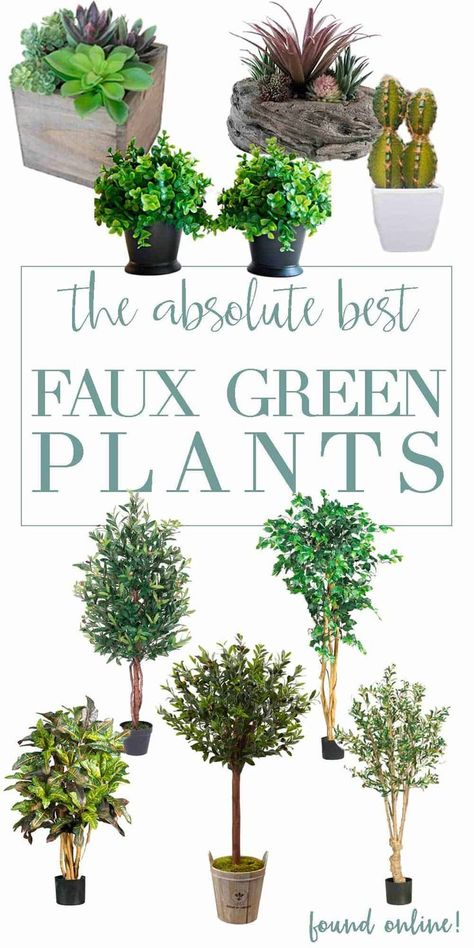 Making this switch will allow your container trees to grow taller and stronger, so you’ll get more out of them before it’s time to say goodbye.
Making this switch will allow your container trees to grow taller and stronger, so you’ll get more out of them before it’s time to say goodbye.
Weather to watch out for
The heat from the pavement can rapidly cause the soil in containers on the road to get excessively warm, burning the roots and drying the soil. Windy conditions can also dry containers even in a protected area.
In colder areas, consider buying a tree that is frost-resistant, or bring your tree inside during harsh winters. Make sure your pot has good drainage holes. If there is excess water in the pot, it can freeze and cause damage to the tree’s root system.
What are the best containers for trees?
The best pots for trees are the ones that are strong and durable enough to be outside in the elements for years and still look great. Clay pots are heavy and more sturdy while lightweight plastic pots are not able to withstand windy conditions.
Our planters, however, do just the job. They are made of heavy-duty fiberglass resin that’s weatherproof, fade-resistant, and don’t rust because they are made of fiberglass!
Tree in fiberglass planter @ Jay ScottsWith these handy tips, buying guide, and planter cheatsheet, you’ll be ready to grow your very own miniature forest within no time. If commercial gardening is your thing, take a look at our large container guide to landscaping.
Or, if you are ready to get stuck into container gardening with trees, it’s time to check out our product range.
Best trees to grow in pots: 15 beautiful compact varieties
(Image credit: Leigh Clapp)
The best trees to grow in pots can add much needed interest to patios, courtyards and other areas of your back yard.
With both deciduous and evergreen options, offering various leaf color, fruit and flowers through the seasons, potted trees are versatile container gardening ideas.
Growing pots in trees is a way to zone a secluded seating or dining area as a patio idea, flowering trees can add color and scent, while citrus or olive trees are ideal if you want to create a Mediterranean-style garden.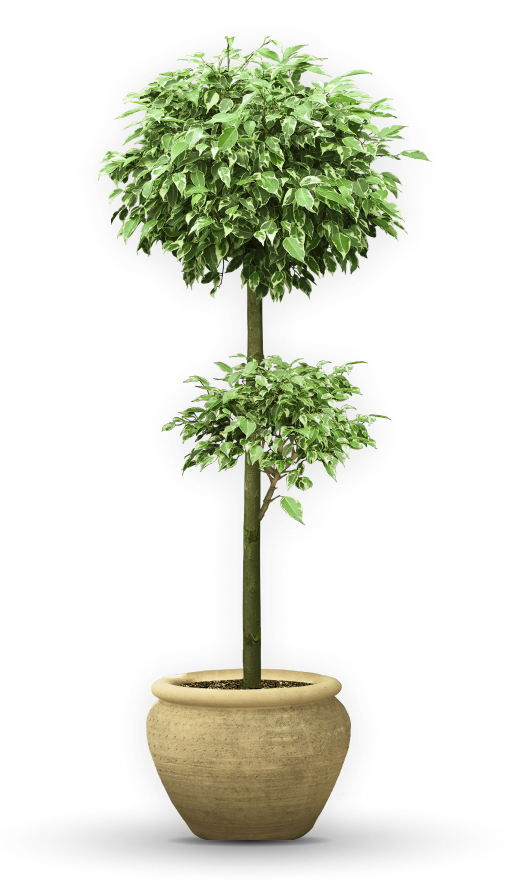
One of the big advantages is that you can grow tree species that wouldn't usually suit the growing conditions in your hardiness zone as the best trees to grow in pots can be moved indoors in colder months.
The best trees to grow in pots
Many different trees can thrive in pots, so look beyond the local garden center for inspiration. You could choose one of the best indoor trees that you move outdoors in warmer months to surround yourself with nature year round.
'There are many types of trees you can grow in pots and containers,' says small space gardening expert Emilly Barbosa Fernandes of Housegrail . 'They instantly brighten up any garden, and can become the main focal point.'
If you want a low-maintenance planting scheme, then the best trees to grow in pots must be compatible with your local climate, and require minimal pruning. An advantage of planting trees in pots is that you can control their soil type – perhaps growing an acid-loving tree in a chalky soil, or creating free-draining conditions in a garden with heavy clay soil.
Consider where you want the tree to be positioned in your garden, as whether it will sit in full sun or receive some shade will be a factor in which varieties will be suitable.
It's important to look at the maximum size of a tree species, and how many years it will take to reach maturity. Some trees are suited to pots for their whole life, while other slow-growing varieties can have a long pot life before needing to be eventually planted in the ground as part of your flower bed ideas.
Trees have hungry, thirsty roots, so container size is also key. Ensure you invest in a pot that's big enough for your chosen tree to flourish.
Remember that a tree planted in a pot will dry out more quickly than in the ground, and the smaller the pot size, the more often you will have to water it.
1. Peach tree
(Image credit: Getty Images)
Enjoy a delicious home harvest of fruit by growing a peach tree in a container. These are among the best fruit trees to grow, and ideal for trees to grow in pots, particularly as you can move the container to the sunniest and warmest positions throughout the year.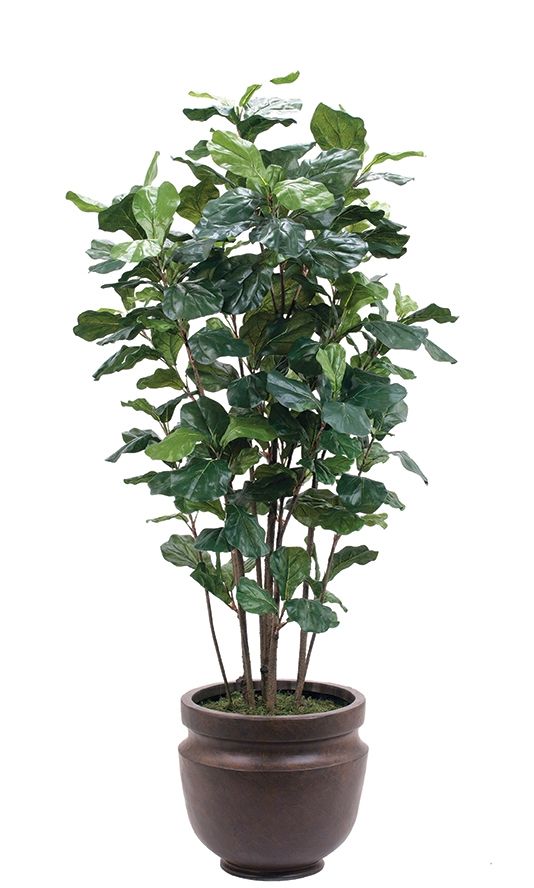
You will need a fairly large container for growing a peach tree – although not so large that you can not easily move it when required. Good drainage is important, so either add some crocs or stones to the bottom of a container, or raise it up on pot feet to aid drainage.
'You will need to water peach trees grown in pots almost every day in the growing season, and repot them every few years' explains Guy Barter, chief horticulturist at the RHS .
2. Crab apple tree
(Image credit: Getty Images)
Producing lovely pink blossom in spring, followed by their ornamental fruits in fall, crab apples are among the best trees to grow in pots.
When planting crab apples in containers, use a pot that is approximately 12-15in. (30-40cm), in a good quality and free draining loam based compost, explain the experts at Pomona Fruits .
Keep them well watered in the first growing season, watering them daily in warmer weather. They are also among the best trees for autumn color.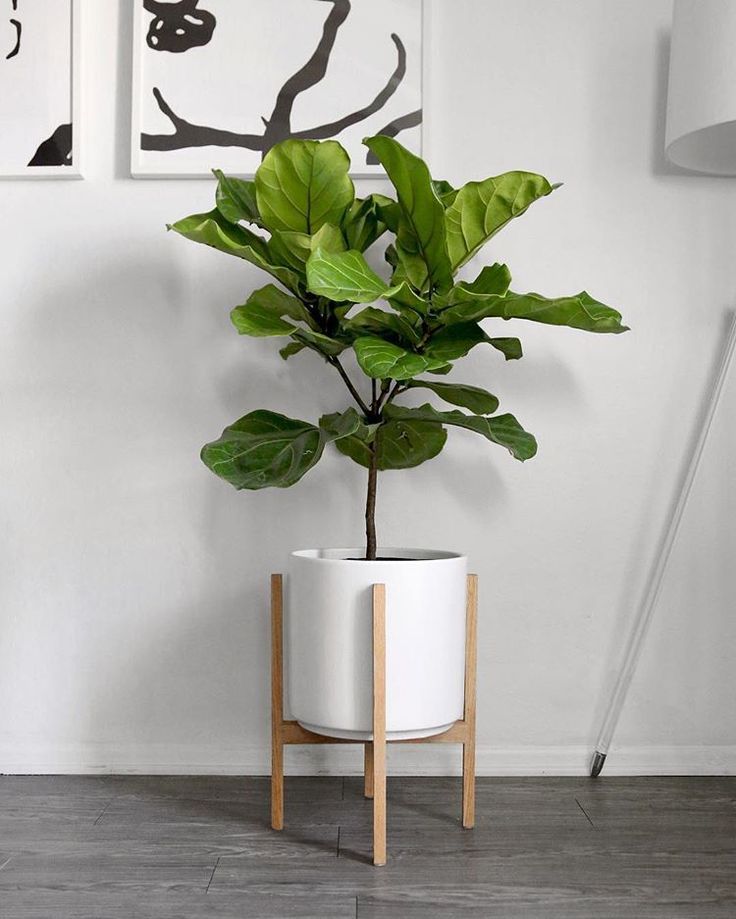
3. Amelanchier
(Image credit: Leigh Clapp)
A small, compact deciduous tree, amelanchier – known by a number of other names including juneberry, shadbush and sarvisberry – offers interest through the seasons. It produces lovely starry white flowers in spring, red and purple berries in summer through to fall, and its bronze tinged young leaves turn through green to the fiery colors of orange and red, making this undoubtedly one of the best trees to grow in pots .
Amelanchier prefers a spot in full sun, so move the container to the best spot throughout the year. Plant bare root trees for the most economical option, in ericaceous compost in a large pot.
4. Japanese maple tree
(Image credit: Ian West / Alamy Stock Photo)
Japanese maples trees – or acer palmatum – are ideal for smaller gardens, as they are slow growing and require minimal pruning or training. They also offer lovely fall color.
‘With a variety of showy cascades in foliage and colors ranging from vibrant greens to deep blood reds, this is a showcase tree for container growing,’ says Tammy Sons, owner of Tennessee Nursery .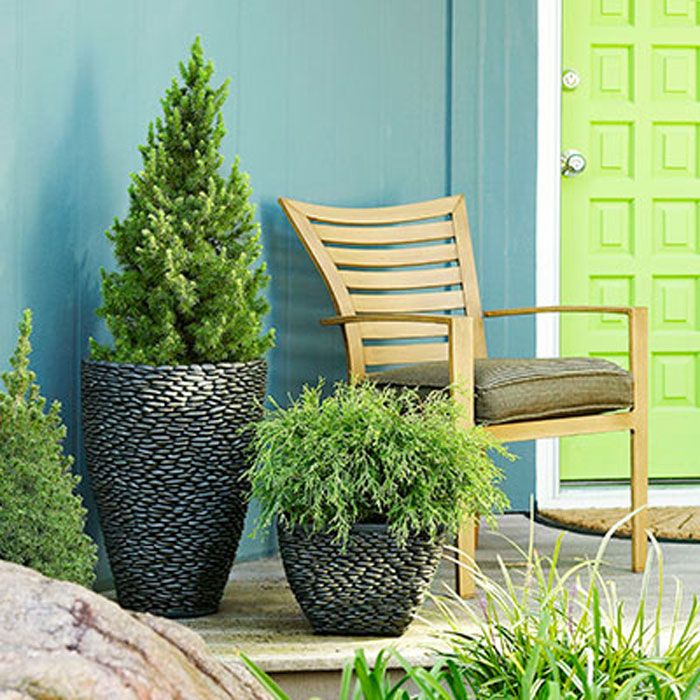
‘Japanese maple trees do not grow to extreme heights, seldom reaching over 15 feet. My favorite varieties are 'Crimson Queen' and 'Bloodgood', with their added attribute of spectacular fall foliage.’
Meanwhile, Lisa Tadewaldt, arborist and owner of Urban Forest Pro , particularly favors the dwarf maple 'Sharp's Pygmy'. ‘They can live in a pot for hundreds of years,' she says. 'You can ignore them or pamper them – either way they always look great. This is a favorite of serious bonsai artists, and what I personally have on my deck in pots.’
Position Japanese maples in a cool spot that receives some shade during the hottest part of the day, and water regularly in the summer. They are perfect to include for Japanese garden ideas.
5. Lemon tree
(Image credit: Future / Mark Bolton)
‘I always think there is something very romantic about a lemon tree growing in a pot,’ says Aaron Bertelsen, author of Grow Fruit & Vegetables in Pots . ‘Perhaps it is the way the scent of the blossom fills a room, or the knowledge that rich people in the past would build dedicated lemon houses to shelter their highly prized trees.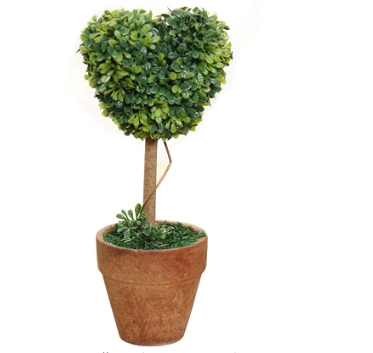 ’
’
While lemon trees make fantastic house plants during the winter, they can grow happily outdoors during the spring and summer. This is why planting them in pots is the best solution, so you can bring them indoors in frosty weather.
You can even learn how to grow lemon from seed, to surround yourself with these uplifting trees.
‘Lemons are hungry plants, so make sure you use a good, soil-based compost, adding some grit or sharp sand to improve drainage,’ adds Bertelsen, who recommends the Meyer variety as it flowers throughout the year.
Make sure you understand how to prune lemon trees to get the best out of them, and let them dry out between waterings.
6. Dwarf conifers
(Image credit: Leigh Clapp)
Larger conifers are some of the best trees for privacy and screening in a backyard, but there are a number of smaller species that are perfect for pots.
Some recommended conifers to consider are dwarf varieties of cypress trees, yew trees, mountain pines, and Chinese juniper.
‘They are not top-heavy and have an equal branch structure from the central leader to the top,’ says Sons.
‘Evergreen conifers also offer year-round beauty and they can successfully be trimmed back in order for them to not overwhelm the container.’
7. Crepe Myrtle
(Image credit: Biosphoto / Alamy Stock Photo)
Crepe myrtle – or crape myrtle – is a striking tree that offers year-round interest, and grows very well in pots.
‘This beautiful tree has large trumpet-shaped flowers that often have an orange tint to them,’ says Lindsey Hyland, founder of Urban Organic Yield . 'Crape myrtles also have good fall color, with attractive peeling bark. I love how the branches are always thick enough to handle being in pots.’
Choose from flowers of white, pink or purple, which bloom from late spring through summer. Some varieties flower until the first frost in fall.
Crepe myrtle trees need full sun to thrive, and in frost-prone areas will need to be overwintered in a greenhouse or conservatory.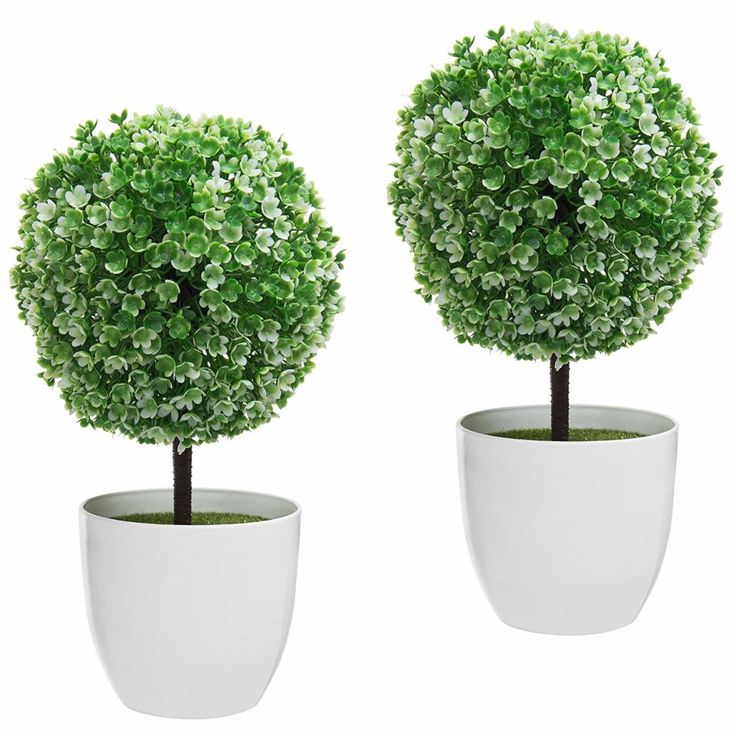 Learn how to prune crepe myrtle to keep your trees looking their best.
Learn how to prune crepe myrtle to keep your trees looking their best.
8. Bay tree
(Image credit: Brent Darby)
As well as creating a sculptural feature, bay trees are aromatic herbs that have wonderfully scented leaves that can be used in cooking fresh or dried.
Bay trees look particularly stunning in pairs flanking a doorway, or can be positioned next to seating areas on the patio for outdoor dining ideas. They thrive in containers and can be clipped into attractive ball or pyramid topiary shapes.
‘A bay tree is very easy to look after, provided you give it a good sunny spot and feed it regularly,’ says Bertelsen. ‘Prune every spring, both to keep it at the size you want it and to reduce any congestion.’
It’s a good idea to repot bay trees every few years to keep them healthy and encourage fresh growth. Bay trees are an excellent choice for planter box ideas.
9. Banana tree
(Image credit: Oleksandr Sokolenko / Alamy Stock Photo)
Banana trees are some of the best trees to grow in pots if you want to add a tropical garden idea to your patio.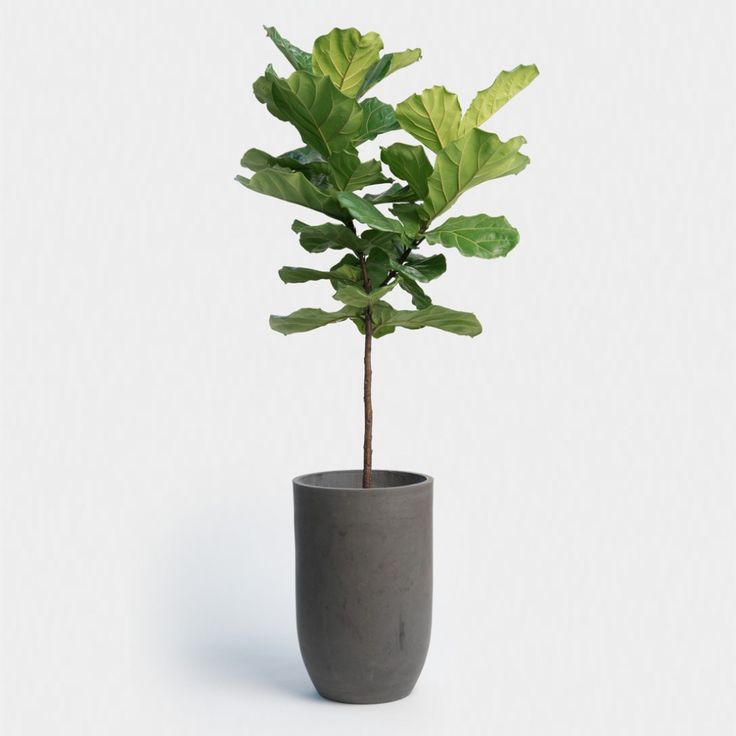 But bear in mind if you are growing a banana tree in the garden this will generally be for their ornamental leaves, rather than for fruit, unless you live in a climate of at least 60ºF (15°C) for most of the year.
But bear in mind if you are growing a banana tree in the garden this will generally be for their ornamental leaves, rather than for fruit, unless you live in a climate of at least 60ºF (15°C) for most of the year.
‘If you live in a cooler climate, then a banana tree still brings a taste of tropics to your landscaping,’ says Tadewaldt. ‘The growth of these trees is usually stunted by the colder weather enough that they can live in the pot for an extended period of time.'
Smaller varieties of banana tree are particularly well suited to climates with colder winters, as they can be brought inside and enjoyed as a houseplant.
10. Rhododendron
(Image credit: Gina Kelly / Alamy Stock Photo)
As well as the popular shrubs, rhododendrons are also available in tree form – R. arboreum. Although after several decades they can eventually reach great heights of over 40 feet, they are slow-growing trees that will live happily for years in a pot, so it is worth learning how to grow rhododendrons.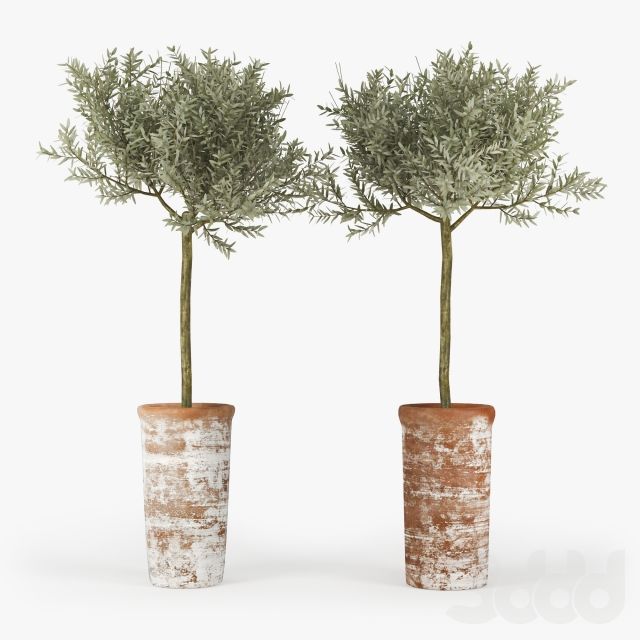
‘I really like rhododendron – it is such a pretty flowering tree with red and white flowers in the summer,’ says Hyland. As an evergreen tree, it possesses attractive dark green leaves year round.
‘My favorite thing about it is its ability to thrive in stunted, acidic, or shallow soil conditions.’
Be sure you know how to prune rhododendron to keep your potted specimens under control.
11. Olive tree
(Image credit: Darren Chung)
If you want to create a Mediterranean garden, olive trees are ideal and perfectly suited to growing in containers, as they can be moved to safety during excessively cold winters.
‘Olive trees are not fond of winter, so make sure to cover them if you know a frost is coming,’ says Barbosa Fernandes.
‘They love warmth and sun, and they also do well in dry areas. However, they do need the right conditions to produce olives.’
In order for the trees to fruit, they will need two months with temperatures below 50°F (10°C), but above 14°F (-10°C), as well as fluctuation between day and night temperatures.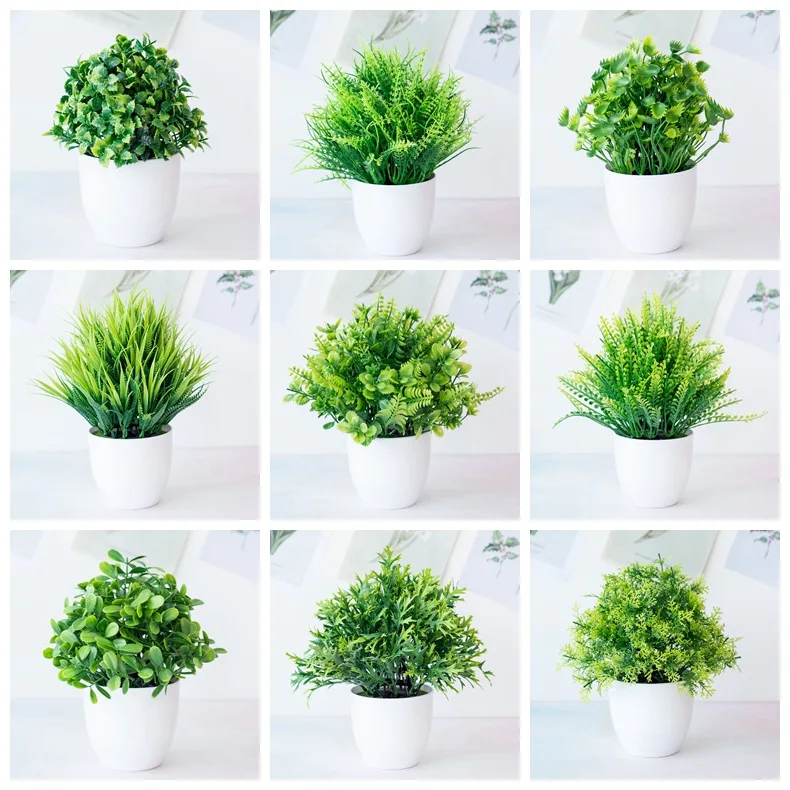 Although self-fertile, olive trees benefit from cross pollination.
Although self-fertile, olive trees benefit from cross pollination.
‘If you don’t have the right conditions to grow olives, don’t be too disappointed, as they’re such elegant evergreen trees,’ says Barbosa Fernandes. ‘Fertilize them in the spring for the best results.’
You also need to know how to prune olive trees to improve their shape and increase the chances of fruit production.
12. Wedding Cake Tree
(Image credit: Steffen Hauser / Botanikfoto / Alamy Stock Photo)
Also known as Cornus controversa 'Variegata', the wedding cake tree is a variegated dogwood tree.
‘The white in the leaves adds interest and it naturally grows in layers – like the layers of a cake, hence its name – and pruning will help to emphasize this form,’ says Tadewaldt.
However, regular pruning isn’t essential, and as the tree is slow-growing, it will live happily in its pot for a long time, as long as the soil is fertile.
‘Eventually, however, this tree will outgrow the pot and need to be transplanted,’ adds Tadewaldt.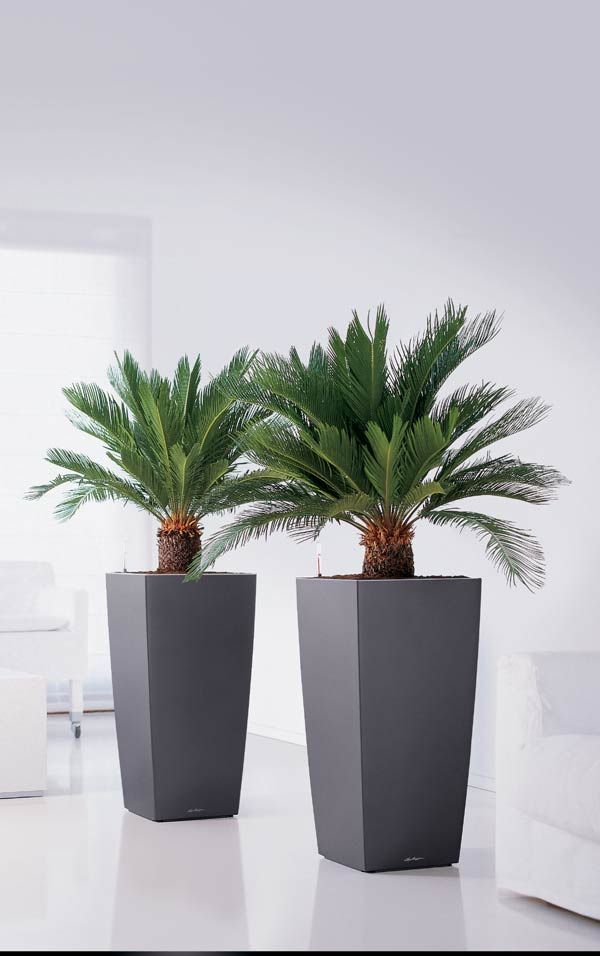
13. Apple tree
(Image credit: Unsplash)
Smaller varieties of apple tree are perfect for growing in pots on the patio. Not only are varieties grown on dwarf rootstock usually quicker to fruit, but they are often better quality than larger trees.
When choosing a variety of apple tree, you need to consider pollination. ‘Self-fertile cultivars are available, although it’s generally recommended to have at least two different partner trees nearby for cross-pollination,' explains Period Living’s gardening expert Leigh Clapp.
When planting apple trees in pairs, 'opt for different varieties of apple tree that flower at the same time.'
If you only have room for one apple tree, Red Falstaff is a great choice as it is heavy cropping and very hardy. Apples trees are among the best fast growing fruit trees so you will enjoy a well sized tree before you know it.
14. Starry magnolia
(Image credit: Getty Images)
While most types of magnolia will grow too large to plant in pots, starry magnolia is a more compact, bushy tree that produces the most beautiful white, star-shaped flowers.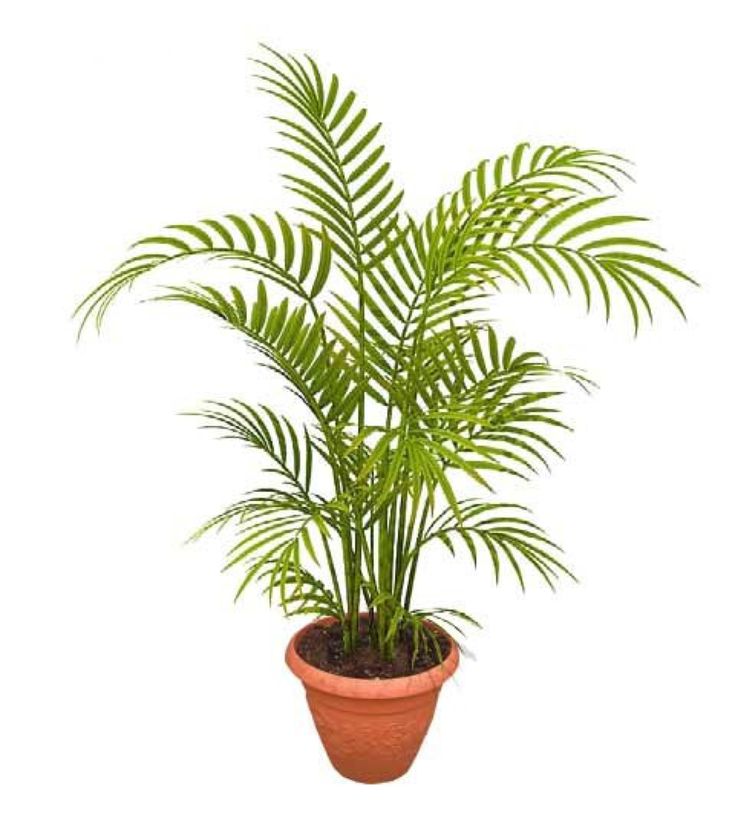
The tree flowers in the spring and exudes a delicate fragrance, adding a romantic air to a patio seating area.
Position starry magnolia in a sheltered spot, and plant in neutral to acid soil that is well drained.
When established, they are low maintenance, and require only mulching in spring, and learn how to prune a magnolia tree lightly in the summer.
15. Kumquat
(Image credit: Francesco Maltinti / Alamy Stock Photo)
Citrus trees make for some of the best indoor trees, but you can grow them outside in the right climates.
‘If you’ve never tried kumquat, then you most definitely should – you can eat the entire thing, skin and all,’ says Barbosa Fernandes.
Producing small orange fruits and flowers that bloom in the summer, these compact trees can be easily grown in pots, and are one of the hardiest citrus fruits.
‘Position them in full sun, and plant in moist, well-draining soil. However, you don’t need to worry about cross-pollination or cold weather killing it down to 18°F (-8°C),’ adds Barbosa Fernandes.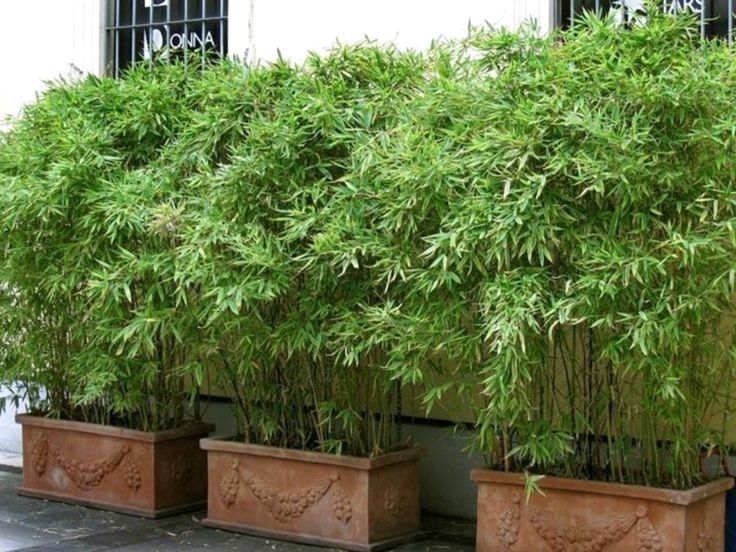
What trees can remain in pots?
Trees can remain in pots indefinitely if you can find a container large enough to accommodate their maximum mature size. Otherwise, you will need to plant them in the ground when they grow too large.
Opt for dwarf varieties of container-friendly trees, such as Japanese maples and small conifers. Bay trees, small citrus trees and olive trees are also good options.
Bear in mind that most trees will need potting on to a larger container every few years, when they have outgrown their pot.
(Image credit: Darren Chung)
Can trees survive in pots over winter?
Some trees can survive in pots over winter, but this will largely depend on your local climate.
In warmer regions, for example, citrus trees can stay outside year round, but in regions that experience cold winter nights of below 50°F (10°C), they will need to be brought inside.
Japanese maple trees are excellent choices for pots in most climates, and can survive very cold winters where temperatures reach as low as -20°F (-28°C).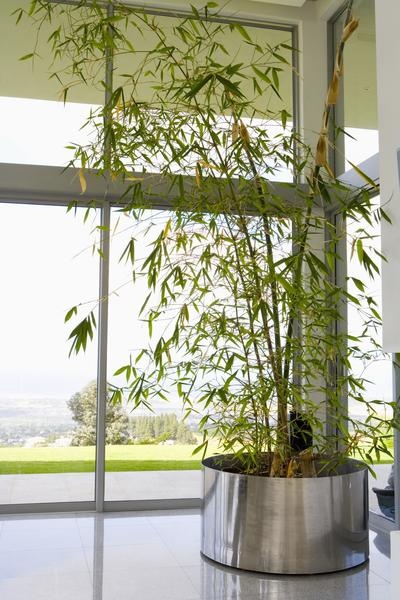
What are the best evergreen trees for pots?
There are a number of best evergreen trees for pots. These include Rhododendron arboreum, bay trees, conifers, Japanese holly and Italian cypress – to name but a few. There are many other options you can find to suit the conditions in your garden and area where you live.
As editor of Period Living, Britain's best-selling period homes magazine, Melanie loves the charm of older properties. I live in a rural village just outside the Cotswolds in England, so am lucky to be surrounded by beautiful homes and countryside, where I enjoy exploring. Having worked in the industry for almost two decades, Melanie is interested in all aspects of homes and gardens. Her previous roles include working on Real Homes and Homebuilding & Renovating, and she has also contributed to Gardening Etc. She has an English degree and has also studied interior design. Melanie frequently writes for Homes & Gardens about property restoration and gardening.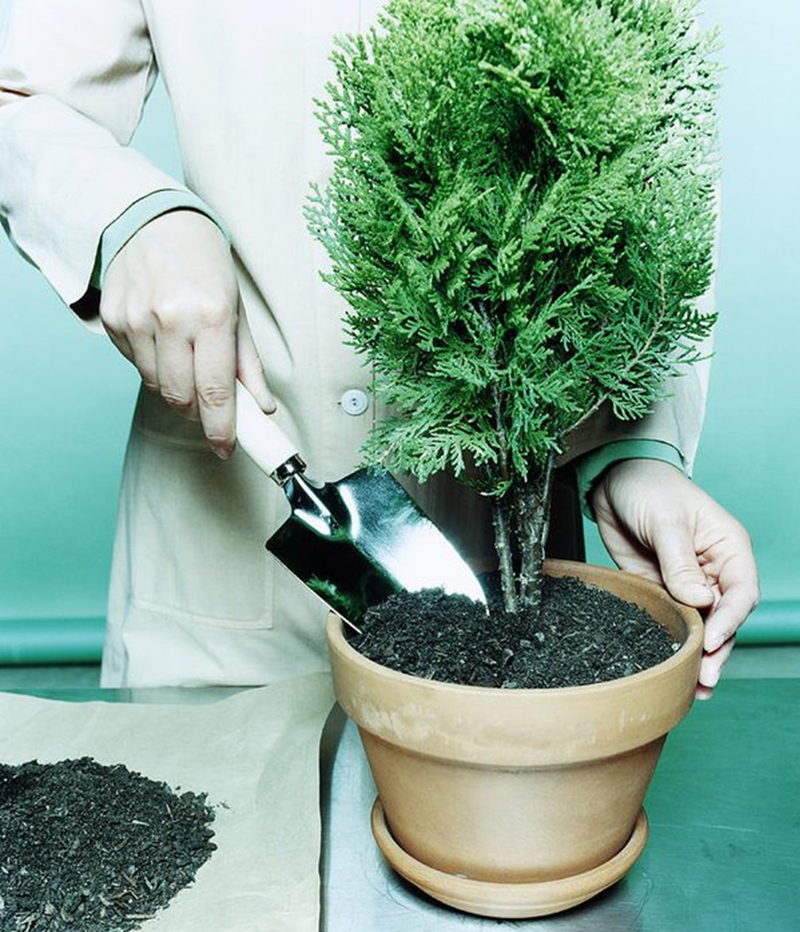
How to achieve privacy in a summer cottage: modern fences and analogues - 1
frivolous options from the following, behind or in front (depending on the style) of a strong and reliable fence. Our life examples are most often either a banal and dull gray picket fence, or a lattice, or a two-meter concrete wall. And each of these modifications does not give much pleasure to either passers-by or residents.
At the same time, most of those who come to the dacha want to relax in nature, lean back in a hammock or armchair, and indulge in blissful contemplation for hours, listening to the sounds of the surrounding peaceful flow of life. But passers-by stare at you, look into your mouth when you eat barbecue, and aloud evaluate your fifth point when you work in the garden. Neighbors, seeing you, immediately run to scratch their tongue or snort from their site, puritanically condemning your half-naked nature in a bathing suit. And suddenly you start feeling like you are in an aquarium.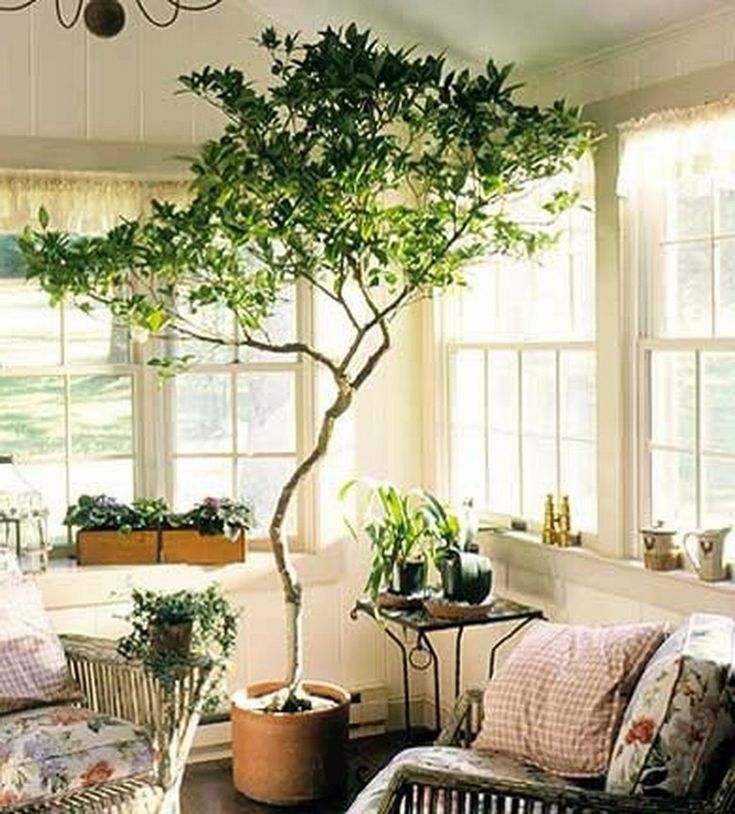 Therefore, privacy in the summer cottage becomes the second priority after security.
Therefore, privacy in the summer cottage becomes the second priority after security.
There are a thousand ways to achieve privacy in a country house, from dense vegetation around the perimeter of the site to the construction of solid - but at the same time aesthetically modern - high fences. This article lists the most relevant options for today and at the same time guaranteeing you privacy.
1. Here, an almost continuous fence made of deliberately imperfectly even boards is painted in different, but complementary colors, which results in an aesthetic chaos that no one can accuse of sloppiness, negligence, but also of outdated or handicraft. In addition to the warm autumn shades of the boards, the overall look is softened by shrubs planted in front of the fence.
2. Continuous green plantations along the perimeter of the fence outside or inside can also create a year-round barrier if you choose the right green culture. Of course, this fence is not suitable for every strip of Russia, but it will come in handy for many.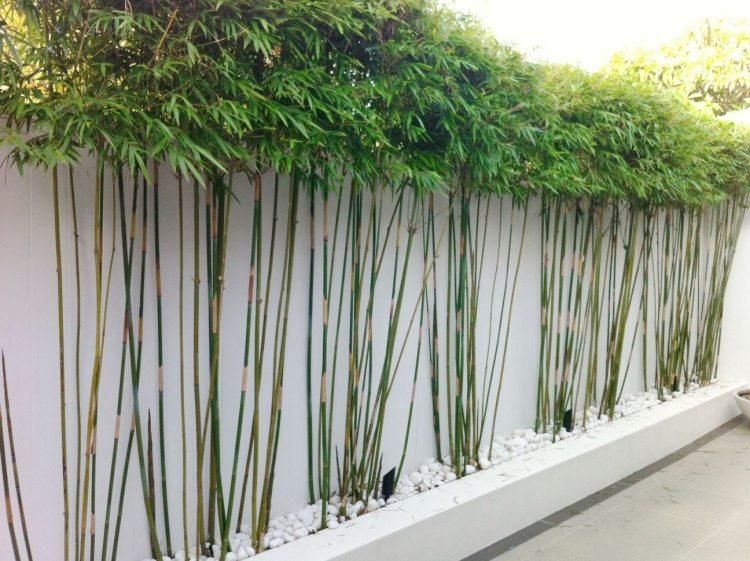 Columnar evergreens like Italian cypress or arborvitae, or periodically cut hedges are an easy solution to create a barrier between the yard and the street/neighboring lot. Previously, an analogue was used in the form of climbing plants braiding concrete walls or forged gratings, but it “worked” only in the summer - once, and this option is considered very outdated today - two: not vintage, but obsolete.
Columnar evergreens like Italian cypress or arborvitae, or periodically cut hedges are an easy solution to create a barrier between the yard and the street/neighboring lot. Previously, an analogue was used in the form of climbing plants braiding concrete walls or forged gratings, but it “worked” only in the summer - once, and this option is considered very outdated today - two: not vintage, but obsolete.
For hedges, dig a hole 0.6 m wide and 0.6 m deep around the perimeter, plant shrubs in it at a distance of about 30.5 cm, bringing the soil level to the branching of the trunk. In the first year after planting, water your hedgerow deeply and frequently, optimally using a drip irrigation system. The only problem is the freezing temperatures that can damage the planting, and the fact that you will have to cut the hedge as needed, i.e. often.
3. An analogue of the hedge from item 2, but a multi-level hedge. To a certain extent, it facilitates the choice of crops and the care of plantings: it is enough to plant evergreen or ordinary trees, any bushes and perennial lush plants, and then just let them grow in breadth and up. Typically, such a fence has a peak shape in cross section: plants first go outside, then bushes, then trees, then the levels go down again, but from the side of the site - bushes and plants again. It is best when choosing crops to also play with their texture and different shades of green, with its depth and brightness - see the picture below.
Typically, such a fence has a peak shape in cross section: plants first go outside, then bushes, then trees, then the levels go down again, but from the side of the site - bushes and plants again. It is best when choosing crops to also play with their texture and different shades of green, with its depth and brightness - see the picture below.
In summer it will be lush greenery, in winter numerous branches will cover the caps of snow, again completely protecting your site from prying eyes. If you choose shady deciduous trees, they will grow very high and close your personal living space even from observant neighbors with two or three stories.
4. There is no desire or opportunity (for example, if we are talking about an open terrace on the second floor of the house) to mess around with trees and bushes planted on the site from season to season - try a garden in containers. For the winter, it can be removed to a warm house, and in the spring it can be forced to serve the purpose of solitude on the street.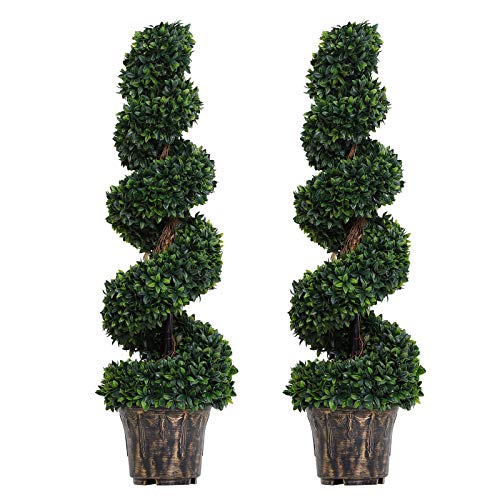 And then the plants will require much less care. Just consider the future weight of pots with flowers and bushes, and choose large pots from special light modern materials. Of the crops for planting, again thuja, then frost-resistant garden bamboo. The picture below shows that even lower plants in pots can be used to isolate a separate zone on the terrace.
And then the plants will require much less care. Just consider the future weight of pots with flowers and bushes, and choose large pots from special light modern materials. Of the crops for planting, again thuja, then frost-resistant garden bamboo. The picture below shows that even lower plants in pots can be used to isolate a separate zone on the terrace.
For a 12-month potted fence, combine showy year-round tall crops with ornamental grasses, autumn-changing shrubs, or dwarf evergreens. Mix colors, textures and foliage types.
Look for new ideas, as well as options for more reliable inanimate fences in the second part of the article!
Source: www.thisoldhouse.com
0003
10 best indoor trees that will refresh the interior of the house
Website editor
Tags:
house plants
houseplants
Vans
Indoor plants not only purify the air and refresh the interior. Recent studies have shown that caring for indoor plants helps reduce psychological and physiological stress. At home, you can grow not only flowers, but also domestic trees.
Recent studies have shown that caring for indoor plants helps reduce psychological and physiological stress. At home, you can grow not only flowers, but also domestic trees.
In our list you will find the 10 most popular house trees that are easy to care for and make a great addition to a space.
Fig tree
This tree has become a real trend! It now and then appears in fashion magazines about interiors and in pictures on Instagram (the social network is recognized as extremist and banned on the territory of the Russian Federation). And all thanks to its wide textured leaves. Young trees have dense foliage that spreads gently in different directions with age
The tree should be located in a place with bright but indirect sunlight. A place near a window facing east is ideal. Water the plant when the topsoil is dry. Add water until it starts to come out from under the bottom of the pot.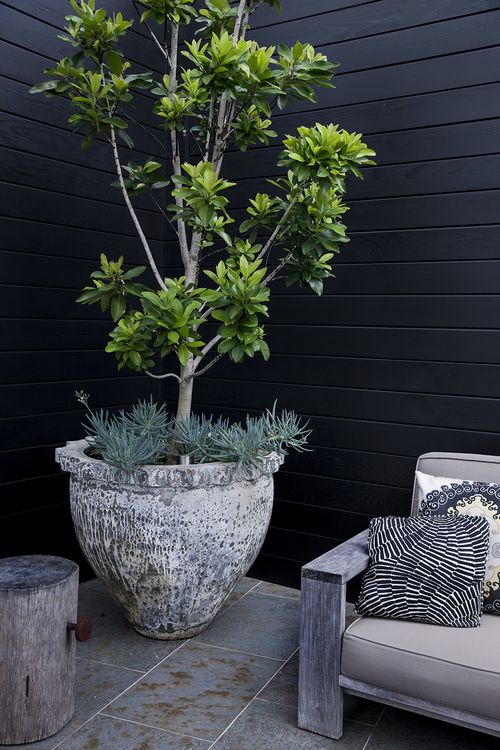
Yucca
Yucca is an evergreen tree plant with spiky structural foliage. Blooms in the maximum possible amount of sunlight. That is, under direct sunlight, it will feel great, since initially this plant originated in the desert. Yucca is ideal for those who constantly forget to water houseplants: the tree is extremely drought tolerant and needs occasional watering.
Scheffler (umbrella tree)
This tree can grow up to 2.5 meters in height if given enough sunlight. If there is little light, then the sheffler stems grow long and sparse. It is not worth watering it too often, as this can lead to loss of leaves and rotting of the roots.
Citrus Tree
While many dwarf fruit trees do well outdoors, the citrus tree can live and thrive year-round indoors. Calamondin orange trees produce tiny, highly acidic fruits.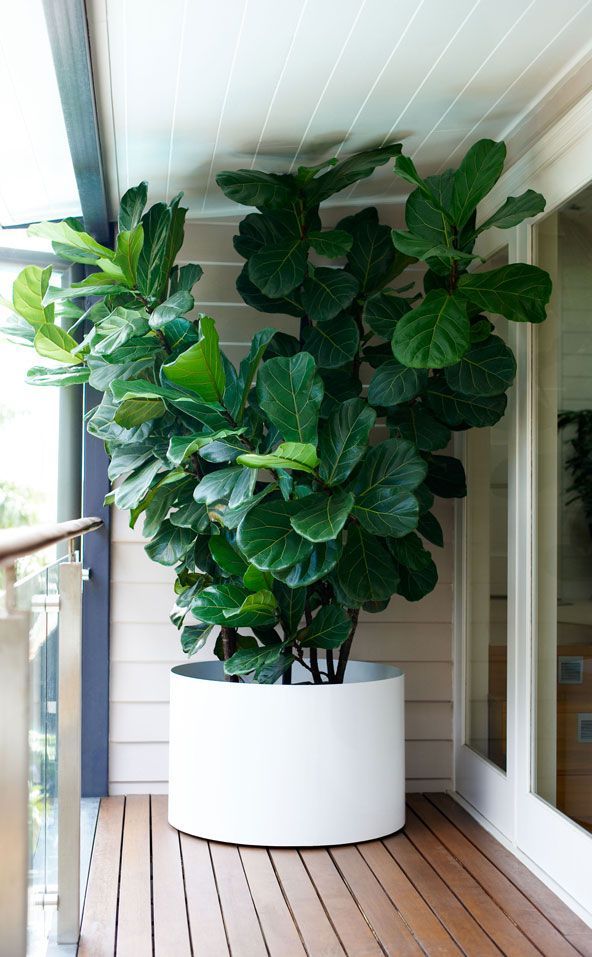 They bloom with small fragrant white flowers that will fill the room with a pleasant smell.
They bloom with small fragrant white flowers that will fill the room with a pleasant smell.
Dieffenbachia
This fast growing plant grows into a lush tree with long leaves that can reach 1.5 meters in height. It is easy to propagate: just cut off a thick stem, leave it in water until roots appear, and then transplant it into a pot. Dieffenbachia loves abundant watering, but without standing water in the pan (this can lead to root rot).
Ficus
This tall and hardy plant comes in three different varieties, from tricolor with variegated leaves to almost black. It should be placed in a place with bright indirect sunlight. You need to water the ficus about once a week, but without fanaticism.
Guianan chestnut
Since this tree naturally grows in swampy areas, it easily tolerates abundant watering and loves bright indirect light.